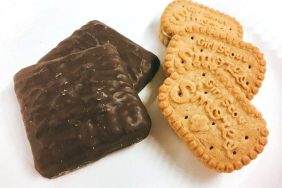Photo: Little Fugitive, production still, 1953, A Morris Engel Production. Image credit: Joseph Burstyn/Photofest; ©Joseph Burstyn,Inc.; ©Morris Engel.
Coney Island is a world unto itself. Situated along four miles of coast, it has become synonymous with a fantastical vision of beachfront life, the kind that could be plumbed from the depths of an imagination trapped indoors for more than half a year because it’s too damn cold outside. But ohh, when the summer comes, the sun shines nearly every day, bringing with it millions of people in desperate need of the convenience of a local getaway. Equal parts escapism and entertainment, strange and seedy and strikingly American at its core brimming with pleasures of populist delight: rides, games, and half-naked girls.
Also: Profile | Chris “Daze” Ellis: The City is My Muse
In celebration, McNay Art Museum, San Antonio, Texas, hosts Coney Island: Visions of the American Dreamland, 1861–2008, now through September 11, 2016. The exhibition features more than 140 objects from a wide array of genres, revealing the extent to which this singular beach has informed popular culture as well as high art, infusing its distinct essence of sun, surf, and Nathan’s Hot Dogs into the very fabric of the America.

Chris “Daze” Ellis, Coney Island Pier, 1995, oil on canvas, Collection of the artist.
From early depictions of Coney Island by Impressionists William Merritt Chase and John Henry Twachtman to modern and contemporary images by Diane Arbus, Bruce Davidson, Walker Evans, Red Grooms, Joseph Stella, Swoon, and Weegee, Coney Island features as stunning selection of paintings, drawings, photographs, prints, documentary and popular film clips, posters, sideshow banners, architectural artifacts, memorabilia, and carousel animals.
The works featured speak to the very best of American art, as the nation began to develop it’s own indigenous style. Consider the work of Chris “Daze” Ellis who spent his formative years as a graffiti writer, creating masterpieces on train cars before taking his talents to the canvas and rendering lyrical scenes of the city with a joyous sense of grace and charm.

Red Grooms, Weegee 1940, 1998–99, acrylic on paper,Private Collection. Image Courtesy Marlborough Gallery, New York; ©2016 Red Grooms/Artists Rights Society (ARS), New York
Or consider the work of Red Grooms, recreating the classic Weegee photograph nearly sixty years after the original image was created, reminding us of the power of a photograph to transcend its original context and become an icon worthy of veneration itself. The very nature of this tribute speaks to the ongoing dialogue about appropriation, one of the most American of all ideologies and cultural practices.
Operating on several levels simultaneously, the exhibition brilliantly showcases the many facets of this tiny strip of land that has been called the People’s Playground” for good reason. Consider the last scene of “The Warriors,” which takes place on its beach. For more than 150 years this has been the site of the hero’s return. Here, in Coney Island, possibility always exists.

Frederick Brosen, Fortune Teller, Jones Walk, Coney Island, 2008, watercolor over graphite on paper, Courtesy of Hirschl & Adler Modern, New York. Photograph by Joshua Nefsky; Image courtesy of Hirschl & Adler Modern, New York; ©2016 Frederick Brosen/Artists Rights Society (ARS), New York
Miss Rosen is a New York-based writer, curator, and brand strategist. There is nothing she adores so much as photography and books. A small part of her wishes she had a proper library, like in the game of Clue. Then she could blaze and write soliloquies to her in and out of print loves.




